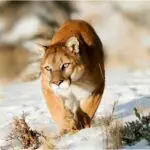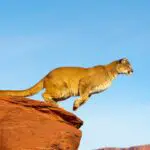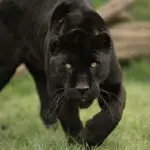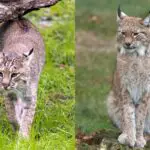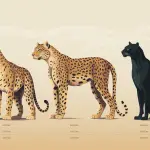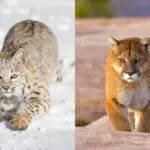Have you stumbled across some unusual-looking poop on your morning hike? You’ve come to the right place!
If you’ve found a rabbit or hare carcass in your locality and want to know what’s doing it? You’ve also come to the right place!
If you find either of these things, there’s a good chance the bobcat’s one of the key suspects. While it can be hard to identify the culprit, through scat identification you can make a well-educated guess.
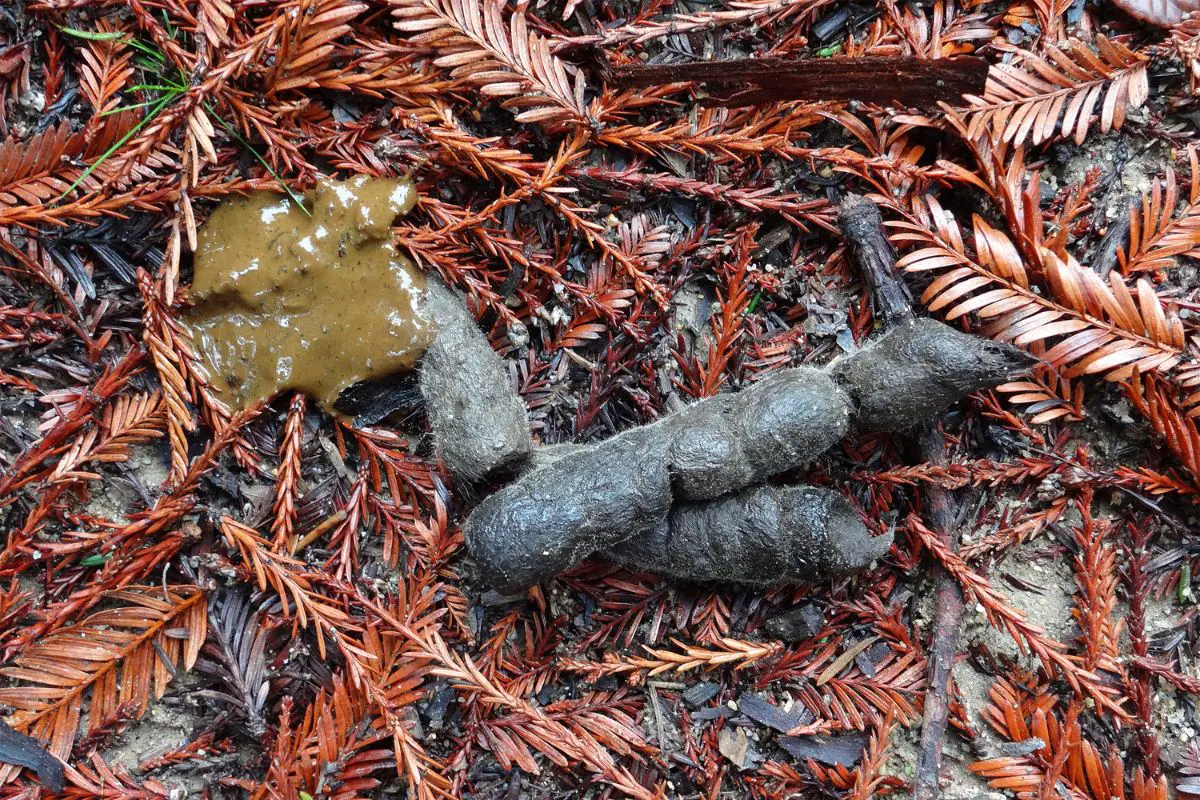
It may seem pretty gross, but scat is one of the most useful ways of tracking down wild animals. You might not know anything about a bobcat’s scat yet, but you will by the end of this article.
In this article, we’ll tell you everything you need to know about bobcat poop and what it looks like. We’ll also tell you how to distinguish bobcat scat from the poop and droppings from other animals.
Let’s get started!
What Does Bobcat Poop Look Like?
Let’s get straight to the point by answering the main question this article focuses on.
Bobcat poop is usually black or brown in color and tubular in shape. In many ways, it looks quite similar to dog poop.
However, unlike dog scat, bobcat scat normally contains fur or bones. This is of course because of their predatory diet.
Often compared to the poop of a lynx, bobcat scat is, on average, 4 inches long and 3 to 4 inches wide. It also has blunt, segmented ends.
It will appear to be shiny and smooth. When the scat dries, it becomes incredibly hard.
The hardened scat tends to be darker in color than the wet, smooth poop.
How Does A Bobcat’s Poop Smell?
Surprisingly, little is known about the smell of bobcat poop. That is because by the time it is usually found, the poop has dried and lost any smell.
However, despite the scat not having much of a smell once it’s dried, there’s another very clear smell we can identify.
More often than not, bobcat scat will be accompanied by the cat’s urine. If so, you’re in luck, if we can call it that!
Bobcat urine, like other species of cat, has a very pungent smell. Sadly, this smell will also dissipate quickly, so you’ll have to time things pretty well to identify the scat by smell.
Does Bobcat Poop Pose Health Risks To Humans?
Despite being one of, if not the best way to identify the presence of a bobcat in your neighborhood, examining bobcat scat has to be done with utmost caution.
That is because bobcat scat can create a health risk to humans.
Bobcat scat has been known to carry harmful diseases that can make humans and pets ill.
With this in mind, it is crucial that you always wear a pair of gloves when examining scat. You might even want to use a long stick instead so you don’t have to touch the poop.
Can Bobcat Poop Spread Any Diseases?
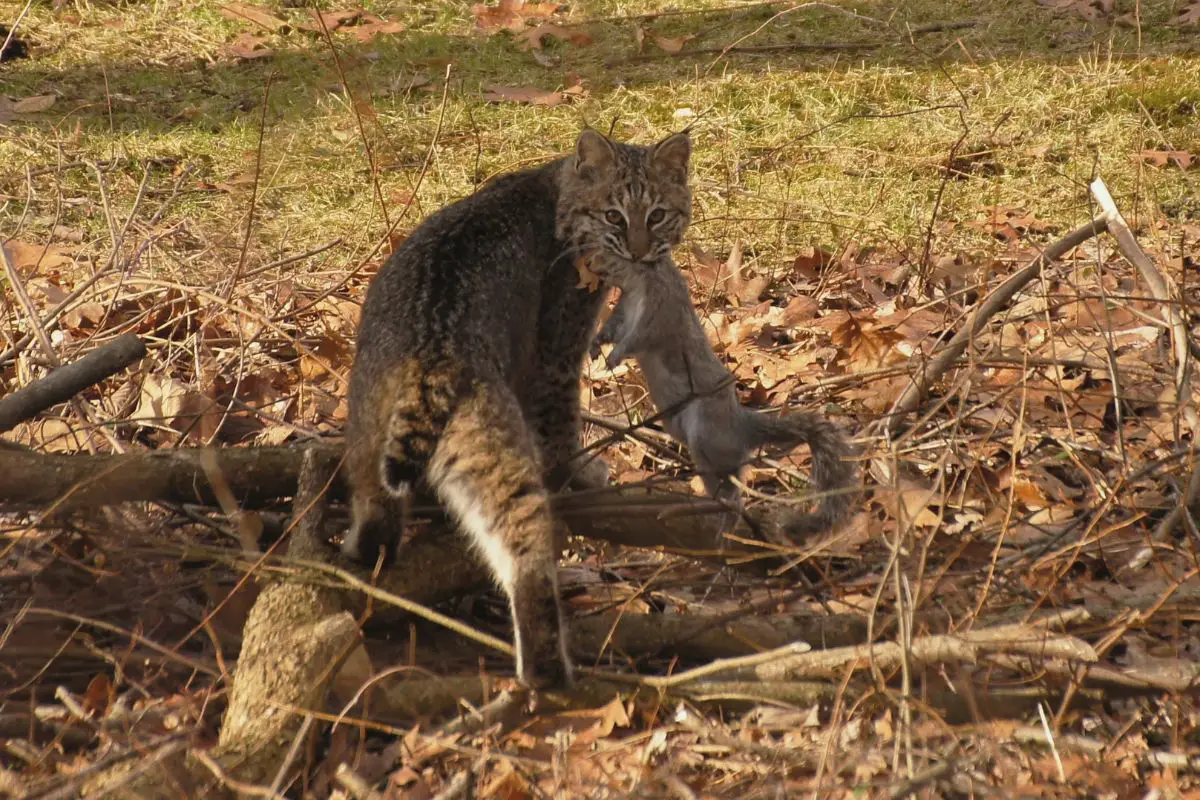
Bobcat poop can quite easily spread disease to both humans and pets, as the species is a common carrier of a parasite called Toxoplasma gondii.
This parasite causes toxoplasmosis.
Other diseases related to bobcat poop include giardiasis, bobcat fever, and cryptosporidiosis.
Common symptoms related to these diseases include weight loss, loss of appetite, vomiting, diarrhea, and stomach cramps.
This reinforces what we mentioned above about wearing gloves and using a long stick to inspect bobcat scat. Some people even prefer to wear a face mask for extra protection.
Bobcat Scat Vs Lynx Scat
When it comes to distinguishing the difference between bobcat poop and lynx poop, things are super difficult. The two scats are extremely difficult to tell apart.
This is mostly down to the fact that both types of scat look the same. They are both of a similar length and color.
The bobcat is part of the lynx genus, which is why the two types of poop are so similar. The chances are, you won’t be able to differentiate between the two.
Bobcat Scat Vs Coyote Scat
Spotting the differences between bobcat and coyote scat is much easier, as both are very different. Coyote scat is often described as a “knotted rope with multiple pieces”.
This is the main difference between the two types of poop. In terms of similarities, coyote poop is tubular in shape.
It is usually 3 to 5 inches long. Having said that, large males have been known to leave behind scat that reaches 12 inches long.
A coyote’s scat is longer and curlier than a bobcat’s scat. It’s also tapered at the ends.
Bobcat Scat Vs Fox Scat
Fox poop is a lot smaller than bobcat scat. Typically, it is much thinner and shorter. It also has pointed ends. Compared to bobcat scat, fox poop is normally lighter in color too.
Despite occasionally being dark brown in color, most fox scat is a light tan color.
Foxes are omnivorous, preferring to eat rodents, birds, earthworms, and berries. The presence of any of those things in a scat can be a sure-fire way of ensuring the scat you’ve found is fox poop.
Just remember that bobcats also like to eat birds and rodents when examining the scat.
Bobcat Scat Vs Pine Marten Scat
Bobcat poop is a lot thicker than pine marten scat. It also has a much different appearance. Despite the two scats being a similar color, the pine martens scat has a different shape.
When defecating, the pine marten wiggles its hips. The end result is a twisted poop. Long, thin, and coiled, pine marten scat is tapered in shape and full of fur and bones.
While pine marten poop might contain the same things as bobcat scat, look out for little extras like grass and leaves as bobcat scat won’t have either.
Bobcat Scat Vs Otter Scat
Unlike the bobcat’s poop, otter scat has a stronger smell. Otter scat smells almost musky.
Aside from a peculiar smell, otter scat is also darker in color than bobcat scat. However, these aren’t the main differences between the two types of scat.
While bobcat poop is likely to contain bones and fur, the otter’s scat is most likely to contain fragments of fish scales and shells.
This is, of course, because the species has a mostly aquatic diet.
Bobcat Scat Vs Hedgehog Scat
Without trying to put you off your dinner, hedgehog scat has a shape quite similar to sausage. No matter what, the hedgehog’s scat is always black in color.
This is one of the biggest differences between bobcat and hedgehog scat.
Unlike bobcat poop, the hedgehog’s scat is also rounded at one end and tapered at the other.
Thanks to a vastly different diet, you’ll also find different things in hedgehog poop. You’ll most likely find the remains of berries and insects.
Bobcat Scat Vs Mountain Lion Scat
Unsurprisingly, mountain lion scat is much bigger than bobcat poop. At least 5 inches long, this is the biggest giveaway that the scat you’re looking at doesn’t belong to the bobcat.
Other than that though, the two cat species have quite similar scats. Like the bobcat, mountain lion poop has blunt ends and is segmented.
Similar to the bobcat, the mountain lion also likes to cover its scat with leaves or soil. You could find bones and fur in both types of scat.
Bobcat Scat Vs Bear Scat
Like bobcat poop, bear scat is tubular in shape. In fact, it slightly resembles human excreta.
The main difference between bobcat and bear scat is that bear scat is longer and wider.
At least 2 inches wide, bear scat can also weigh over a pound.
Interestingly, bear scat might also be watery or semi-liquid depending on what the bear fed on.
From time to time, bears also love to eat fruit, so don’t be surprised to see traces of that in their scat. This is something you won’t find in bobcat scat.
What To Do If You Find Bobcat Scat?
If you find bobcat scat in your locality, you don’t need to worry too much.
Despite being an aggressive species of cat with large claws and teeth, bobcats are very scared of humans. This shy species is very unlikely to attack you.
The chances are, the bobcat was simply passing through on the lookout for food.
However, despite being terrified of humans and attacks being very rare, that doesn’t mean you still shouldn’t be careful.
It isn’t out of the question that a bobcat could attack when accidentally confronted or startled.
The best thing to do if you find bobcat scat is to steer clear of that area until you’re confident the cat has gone. That also means keeping your children out of the area and keeping pets indoors.
If the problem persists, you might want to call a wildlife service to come and relocate the bobcat.
Final Thoughts
There you have it, everything you need to know about bobcat scat. As you can see from this article, identifying bobcat poop isn’t too difficult.
While it may have no smell, it has a relatively distinct appearance.
Tubular in shape and brown in color, you can identify bobcat poop by its color, size, contents, and the way it’s been hidden.
If you plan on inspecting potential bobcat scat, always remember to wear a pair of gloves. In our opinion, using a long stick is beneficial too.
- Bengal Cat vs Wild Bengal Tiger: Complete Comparison 2025 - October 31, 2025
- Complete Wild Cat Spotting Guide for Hikers 2025 - October 31, 2025
- Lynx vs Bobcat: Complete Field Identification Guide 2025 - October 30, 2025


